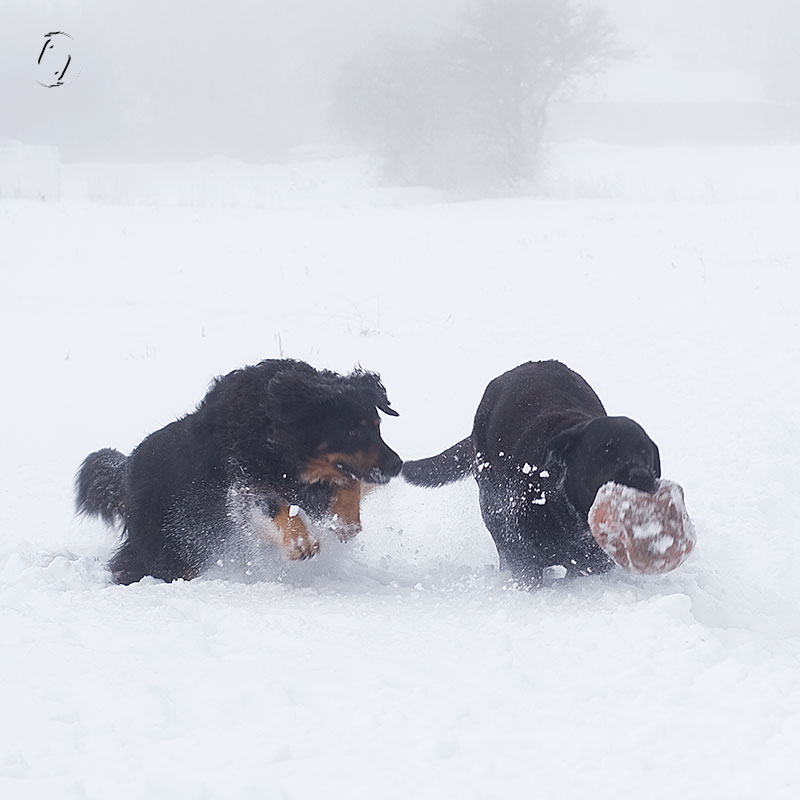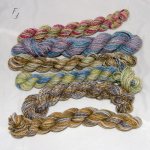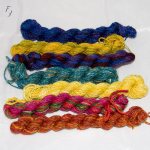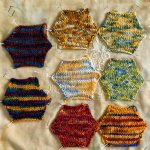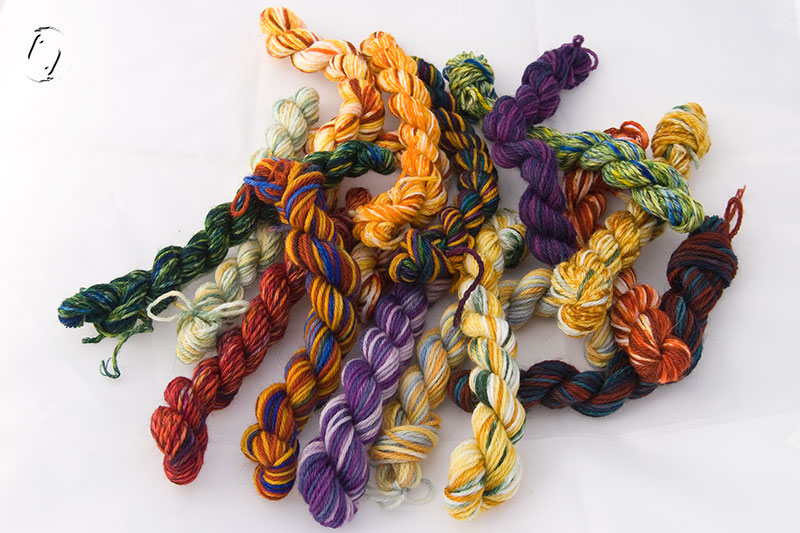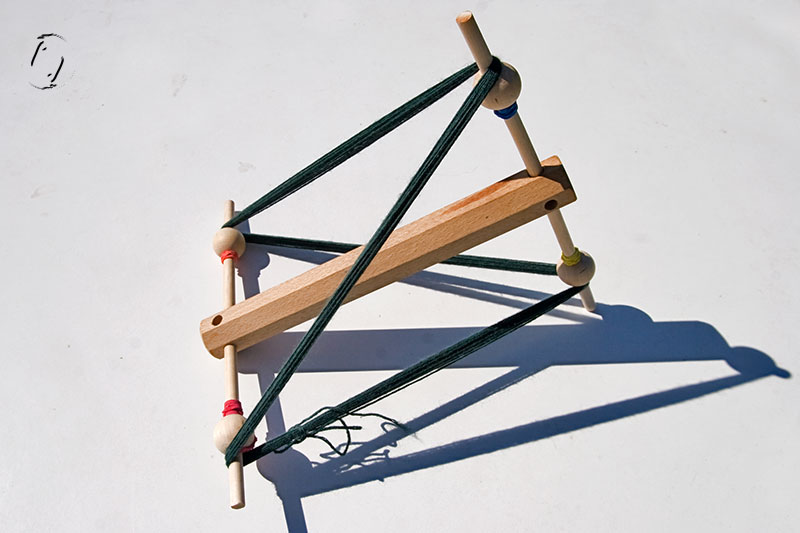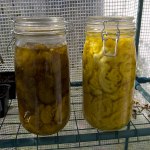 My first venture into solar dyeing, this grey, cold, miserable summer, was a couple of jars with silk and dye from Dyer’s Chamomile.
My first venture into solar dyeing, this grey, cold, miserable summer, was a couple of jars with silk and dye from Dyer’s Chamomile.
We did get one week of warm and sunny, but I didn’t actually think of moving my jars into the greenhouse until afternoon on the last day… Pretty typical of me.
After about a month I pulled it out, since nothing much seemed to be happening. (forgot to register, sorry)
I didn’t get any orange from the Tinctoria this time, but not necessarily due to temperature, but rather the fact that I was using 1/1 dyestuff to fiber this time as opposed to 3/1 last time. Bit of a shame since I wanted the orange shade as part of the silk project. So I fixed it by adding a handful of frosen coreopsis to some of the silk and a pot of hot water.
There wasn’t much difference in colour in the copper mordanted silk compared to the alum mordanted, so since I needed olive for my spinning project I dunked it in my horse shoe bucket. Voila presto!
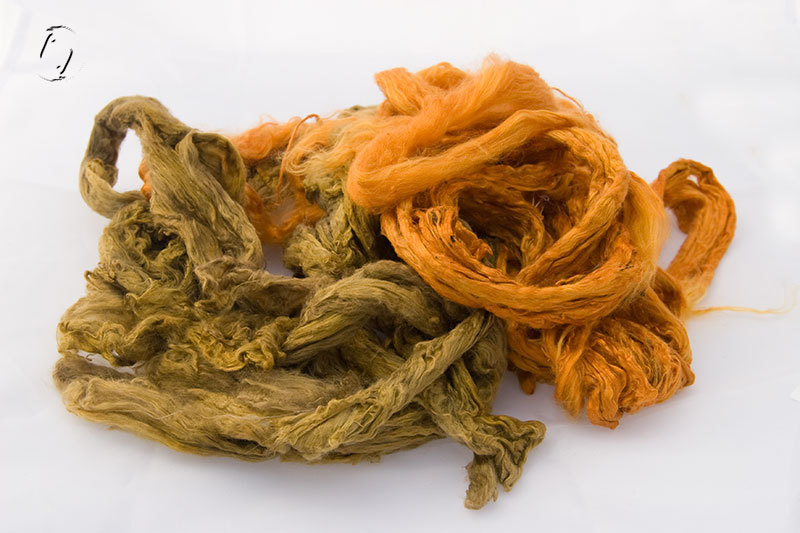
Unfortunately I ran into another problem with the silk. I’d used two different batches, and the bit that I’d been gifted in a swap was really, really odd even as I soaked it before dyeing. Didn’t get wet properly, didn’t “float” and smelled odd. Did I pay attention? Nooooo… So what happend to that portion was, after it’s all dry and ready, the silk was completely brittle and rough to the touch. I can tear the fibres into short, short bits and it just feels unpleasant even after a wash. Not going to spin it. At first I thought it was the iron, but when half the coreopsis dyed silk ended up the same and the other half didn’t I guess it has to be the silk itself.

So I had to take some more of the yellow, that was supposed to stay yellow, and dunk that in iron to get the greenish tint, and then I gave up and acid dyed a new piece for orange. Easy to spot in the crowd I think, but probably won’t be noticed once they’re blended.
â Leave a Comment
Koldfarvet silke
Ikke helt SOLfarvet, eftersom vi ikke har haft så meget af den, i hvert fald ikke sommertemperatur, men dog farvet uden opvarmning af fibrene. De stod i glas ca. en måned, men der skete ikke rigtig den store udvikling de sidste par uger. Farvebadet er gåseurt, det ene glas med kobberbejset silke.
Jeg fik ikke orange denne gang, formentlig pga mindre plantemasse pr. fiber, ca. 1/1. Kobberglasset var en ret mørk gul, men ikke den grønlige farve jeg skulle bruge, sÃ¥ den kom lige et dyp i min hesteskospand og sÃ¥ blev det ellers oliven pÃ¥ nul komma fem. Orange fik jeg ved at lige opvarme en hÃ¥ndfuld nedfrosset skønhedsøje – coreopsis tinctoria og putte noget af det gule silke i.
Desværre viste den ene portion silke sig at være mere end underlig, så både den grønne og det meste af den orange er fuldstændig sprø og ru. Jeg kan trække fibrene over i korte, korte stykker helt uden at anstrenge mig. Silken var også anderledes allerede da jeg havde det i blød før farvningen, men jeg havde ikke regnet med det ville gå så galt.
Så jeg var nødt til at tage lidt af det gule og dyppe i jern igen, og for at have nok til mit projekt syrefarvede jeg så lige en portion orange. Jeg håber den ikke skiller sig ligeså meget ud når de bliver blandet.
 We heat the house only with the woodstove in the living room, and while the house is warm enough, I do tend to get cold hands sitting in my “office”, typing or just mousing away with one hand.
We heat the house only with the woodstove in the living room, and while the house is warm enough, I do tend to get cold hands sitting in my “office”, typing or just mousing away with one hand.
